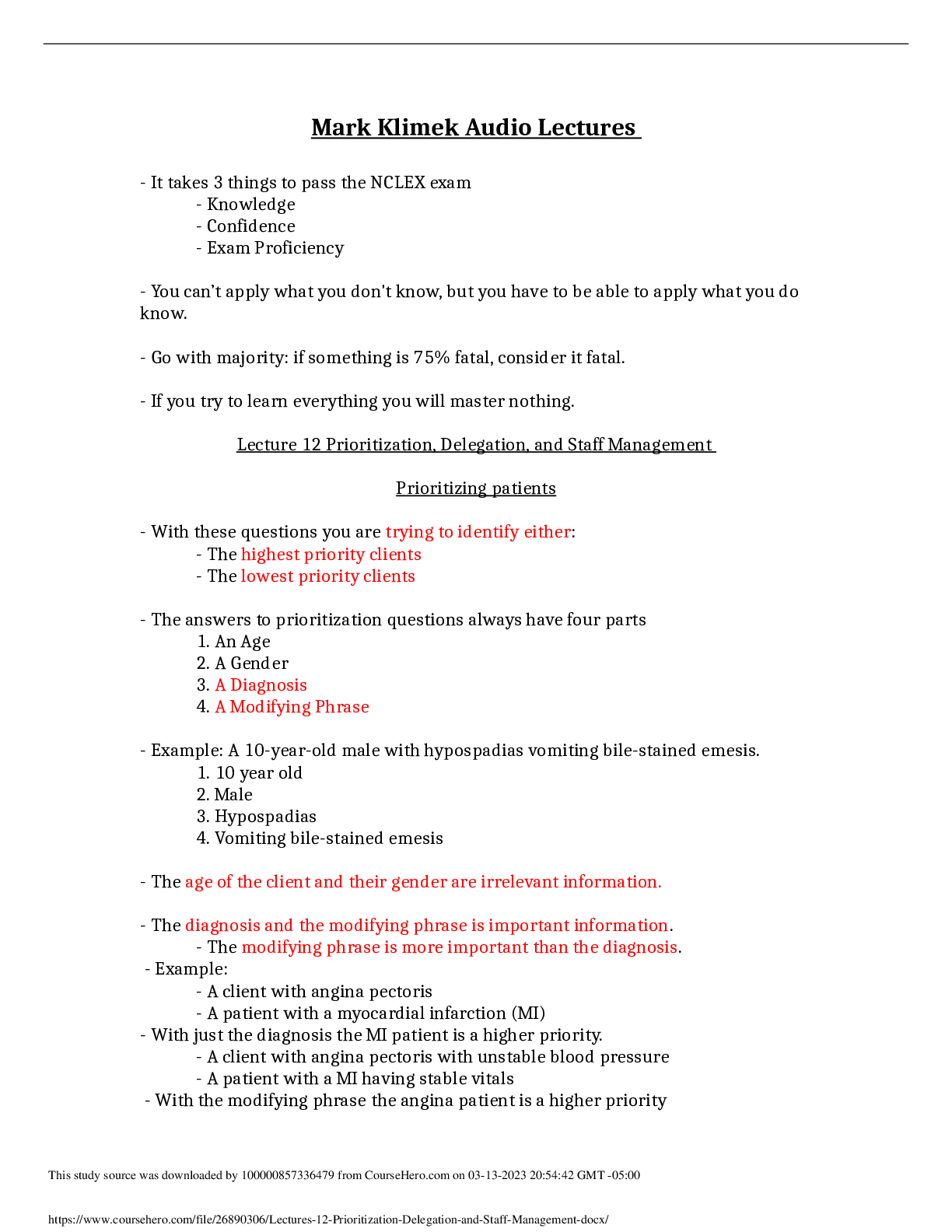*NURSING > NCLEX > Blood Administration NCLEX Practice Questions and Answers 2022 with complete solution. Graded A. 202 (All)
Blood Administration NCLEX Practice Questions and Answers 2022 with complete solution. Graded A. 2022/2023 update
Document Content and Description Below
Blood Administration NCLEX Practice Questions and Answers 2022 with complete solution Packed red blood cells have been prescribed for a client with low hemoglobin and hematocrit levels. The nurse t ... akes the client's temperature before hanging the blood transfusion and records 100.6 F orally. Which action should the nurse take? 1) Begin the transfusion as prescribed. 2) Administer an antihistamine and begin the transfusion. 3) Delay hanging the blood and notify the health care provider. 4) Administer two tablets of acetaminophen (Tylenol) and begin the transfusion. - Answer- 3) Delay hanging the blood and notify the health care provider. Rationale: If the client has a temperature higher than 100 F, the unit of blood should not be hung until the HCP is notified and has the opportunity to give further prescriptions. The HCP likely will prescribe that the blood be administered regardless of the temperature, but the decision is not within the nurse's scope of practice to make. The nurse needs an HCP's prescription to administer medications to the client. The nurse has received a prescription to transfuse a client with a unit of packed red blood cells. Before explaining the procedure to the client, the nurse should ask which INITIAL question? 1) "Have you ever had a transfusion before?" 2) "Why do you think that you need the transfusion?" 3) "Have you ever gone into shock for any reason in the past?" 4) "Do you know the complications and risks of a transfusion?" -Answer- 1) "Have you ever had a transfusion before?" Rationale: Asking the client about personal experience with transfusion therapy provides a good starting point for client teaching about this procedure. Questioning about previous history of shock and knowledge of complications and risks of transfusion are not helpful because they may elicit a fearful response from the client. Although determining whether the client knows the reason for the transfusion is important, it is not an appropriate statement in terms of eliciting information from the client regarding an understanding of the need for the transfusion. The nurse has just received a unit of packed red blood cells from the blood bank for transfusion to an assigned client. The nurse is careful to select tubing especially made for blood products, knowing that this tubing is manufactured with which item? 1) An air vent 2) Tinted tubing3) An in-line filter 4) A microdrip chamber -Answer- 3) An in-line filter Rationale: The tubing used for blood administration has an in-line filter. The filter helps ensure that any particles larger than the size of the filter are caught in the filter and are not infused into the client. Tinted tubing is incorrect because blood does not need to be protected from light. The tubing should be macrodrip, not microdrip, to allow blood to flow freely through the drip chamber. An air vent is unnecessary because the blood bag is not made of glass. The client has received a transfusion of platelets. The nurse evaluates that the client is benefiting most from this therapy if the client exhibits which finding? 1) Increased hematocrit level 2) Increased hemoglobin level 3) Decline of elevated temperature to normal 4) Decreased oozing of blood from puncture sites and gums -Answer- 4) Decreased oozing of blood from puncture sites and gums Rationale: Platelets are necessary for proper blood clotting. The client with insufficient platelets may exhibit frank bleeding or oozing of blood from puncture sites, wounds, and mucous membranes. Increased hemoglobin and hematocrit levels would occur when the client has received a transfusion of red blood cells. An elevated temperature would decline to normal after infusion of granulocytes if those cells were instrumental in fighting infection in the body. The nurse has obtained a unit of blood from the blood bank and has checked the blood bag properly with another nurse. Just before beginning the transfusion, the nurse should assess which PRIORITY item? 1) Vital signs 2) Skin color 3) Urine output 4) Latest hematocrit level -Answer- 1) Vital signs Rationale:A change in vital signs during the transfusion from baseline may indicate that a transfusion reaction is occurring. This is why the nurse assesses vital signs BEFORE the procedure and again after the first 15 minutes. The other options do not identify assessments that are a priority just before beginning a transfusion. The nurse has just received a prescription to transfuse a unit of packed red blood cells for an assigned client. Approximately how long will the nurse need to stay with the client to ensure that a transfusion reaction is not occurring? 1) 5 minutes 2) 15 mintues 3) 30 minutes 4) 45 mintues -Answer- 2) 15 mintues Rationale: The nurse must remain with the client for the first 15 minutes of a transfusion, which is usually when a transfusion reaction may occur. This enables the nurse to detect a reaction and intervene quickly. Following infusion of a unit of packed red blood cells, the client has developed new onset of tachycardia, bounding pulses, crackles, and wheezes. Which action should the nurse implement FIRST? 1) Maintain bed rest with legs elevated 2) Place the client in high-Fowler's position 3) Increase the rate of infusion of intravenous fluids 4) Consult with the HCP regarding initiation of oxygen therapy. -Answer- 2) Place the client in high-Fowler's position Rationale: New onset of tachycardia, bounding pulses, crackles and wheezes post-transfusion are evidence of fluid overload, a complication associated with blood transfusions. Placing the client in a high-Fowler's (upright) position will facilitate breathing. Measures that increase blood return to the heart, such as leg elevation and administration of intravenous fluids, should be avoided at this time. In addition, administration of fluids cannot be initiated without a prescription. Consulting with the HCP regarding administration of oxygen may be necessary, but positional changes take a short amount of time to do and should be initiated first. A client is brought to the emergency department having expe [Show More]
Last updated: 3 years ago
Preview 1 out of 5 pages

Buy this document to get the full access instantly
Instant Download Access after purchase
Buy NowInstant download
We Accept:

Reviews( 0 )
$8.00
Can't find what you want? Try our AI powered Search
Document information
Connected school, study & course
About the document
Uploaded On
Sep 21, 2022
Number of pages
5
Written in
All
Seller

Reviews Received
Additional information
This document has been written for:
Uploaded
Sep 21, 2022
Downloads
0
Views
208
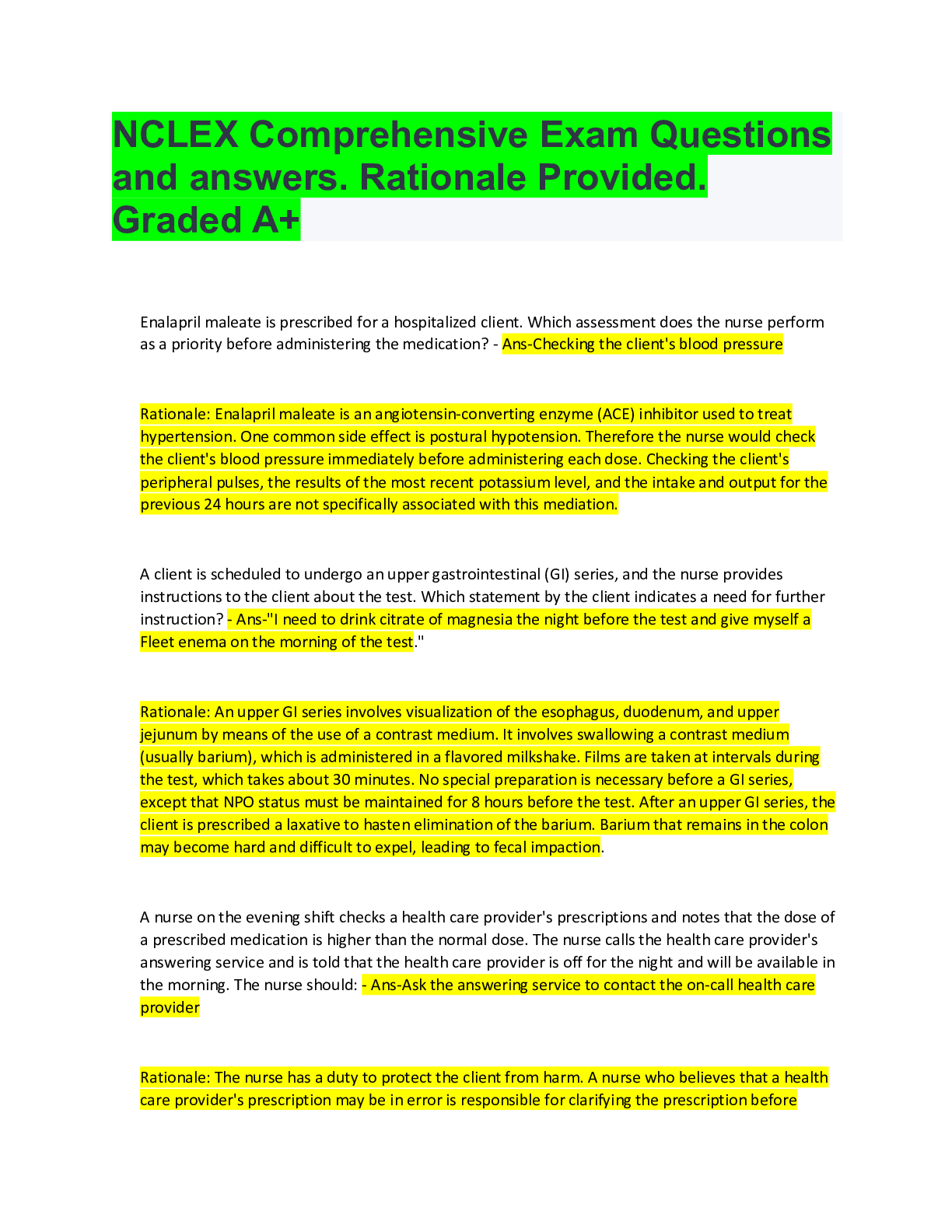
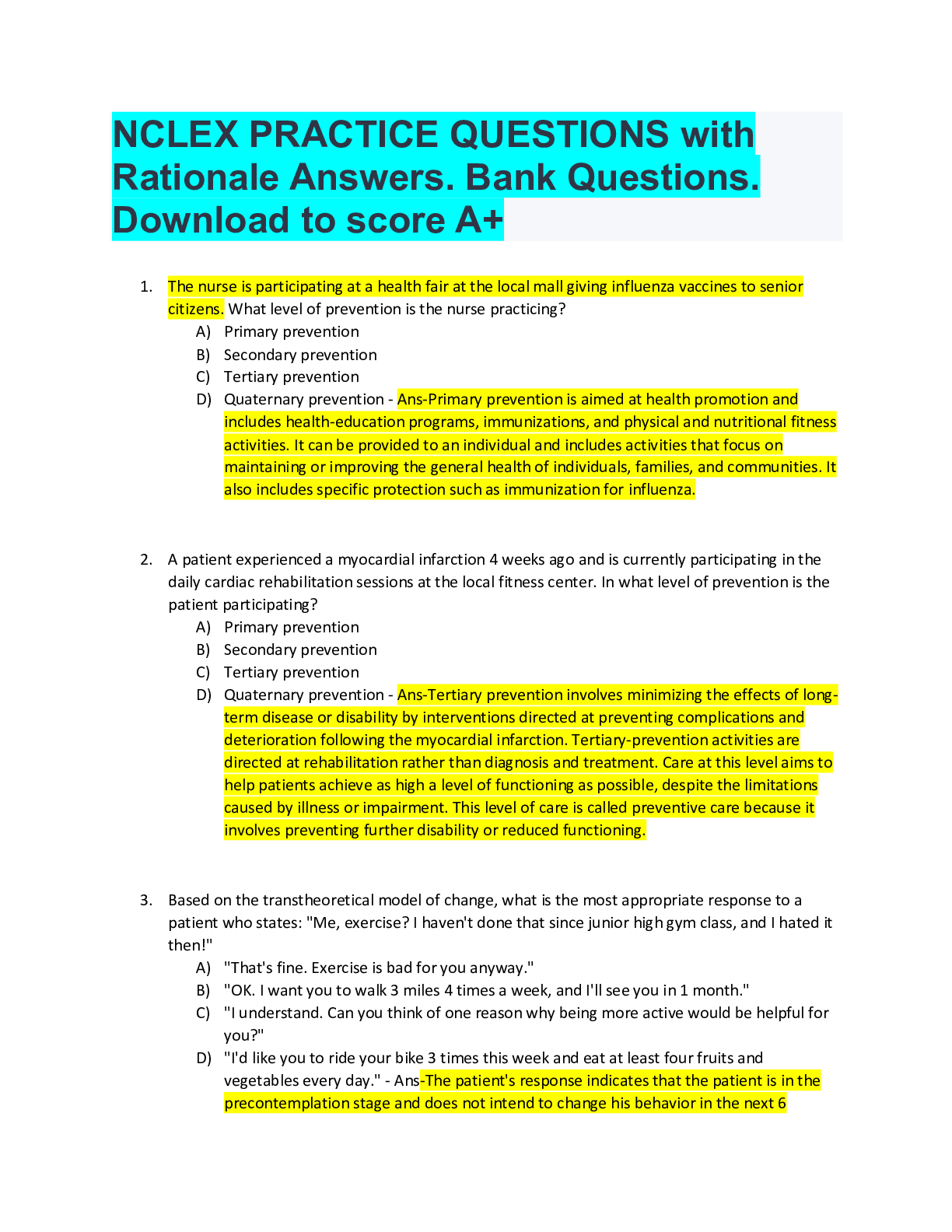



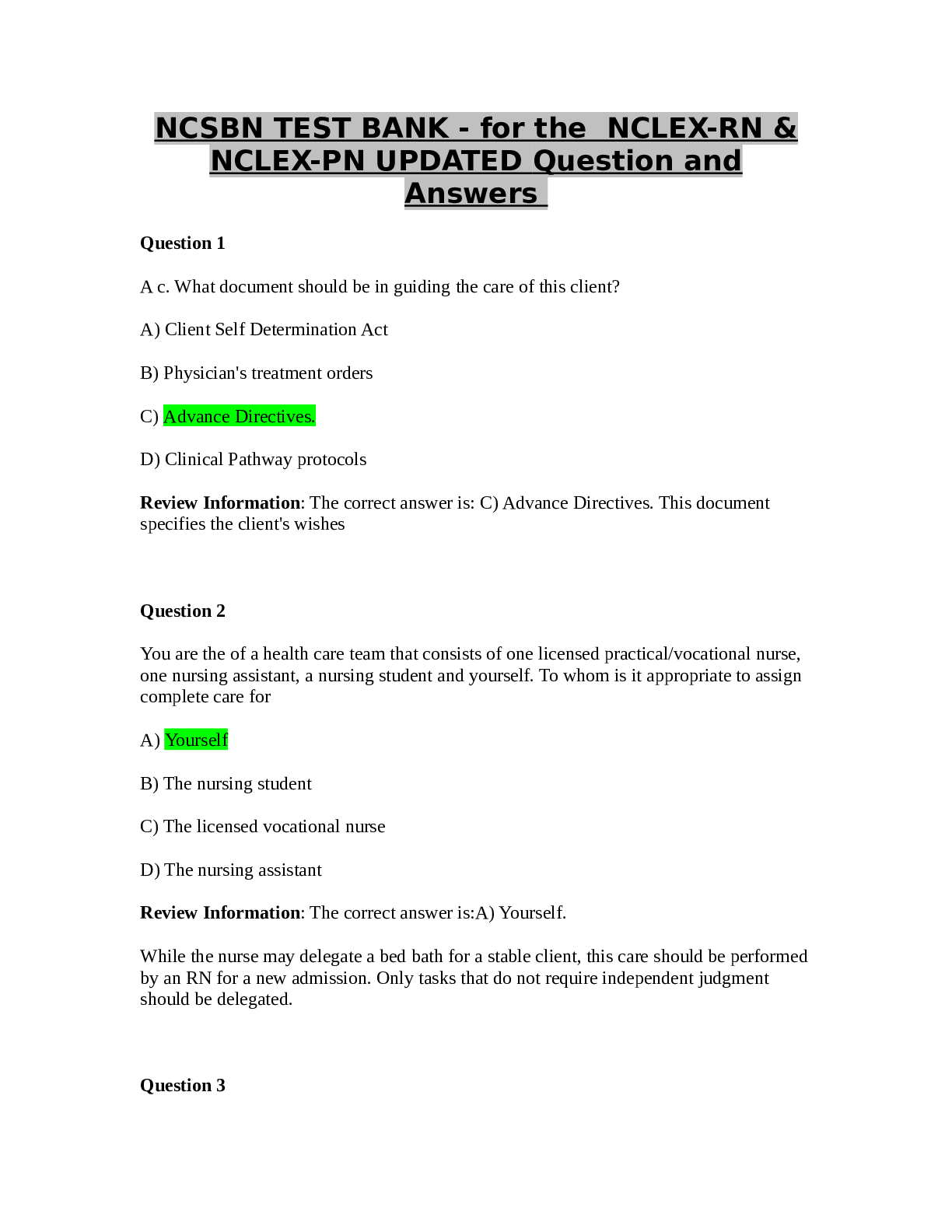







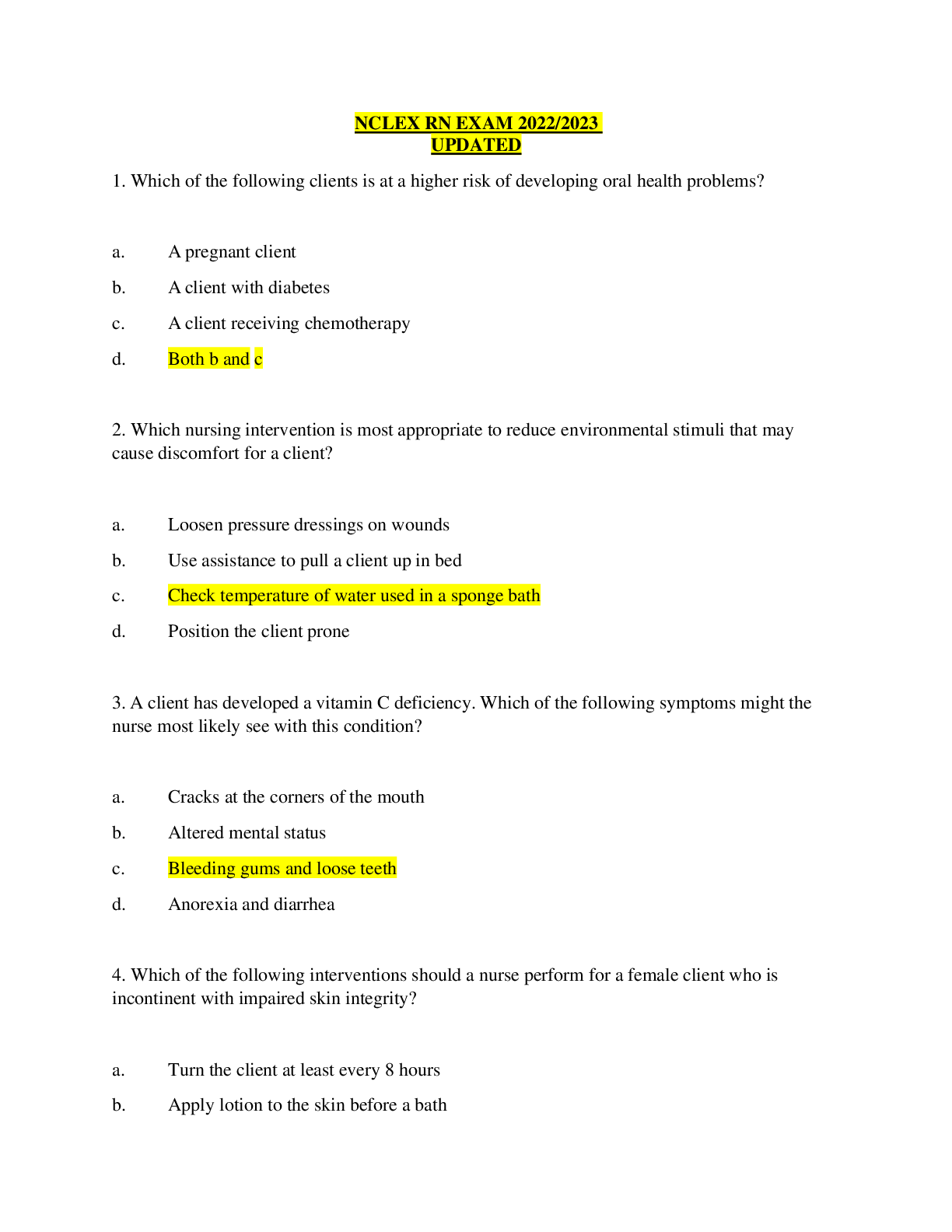
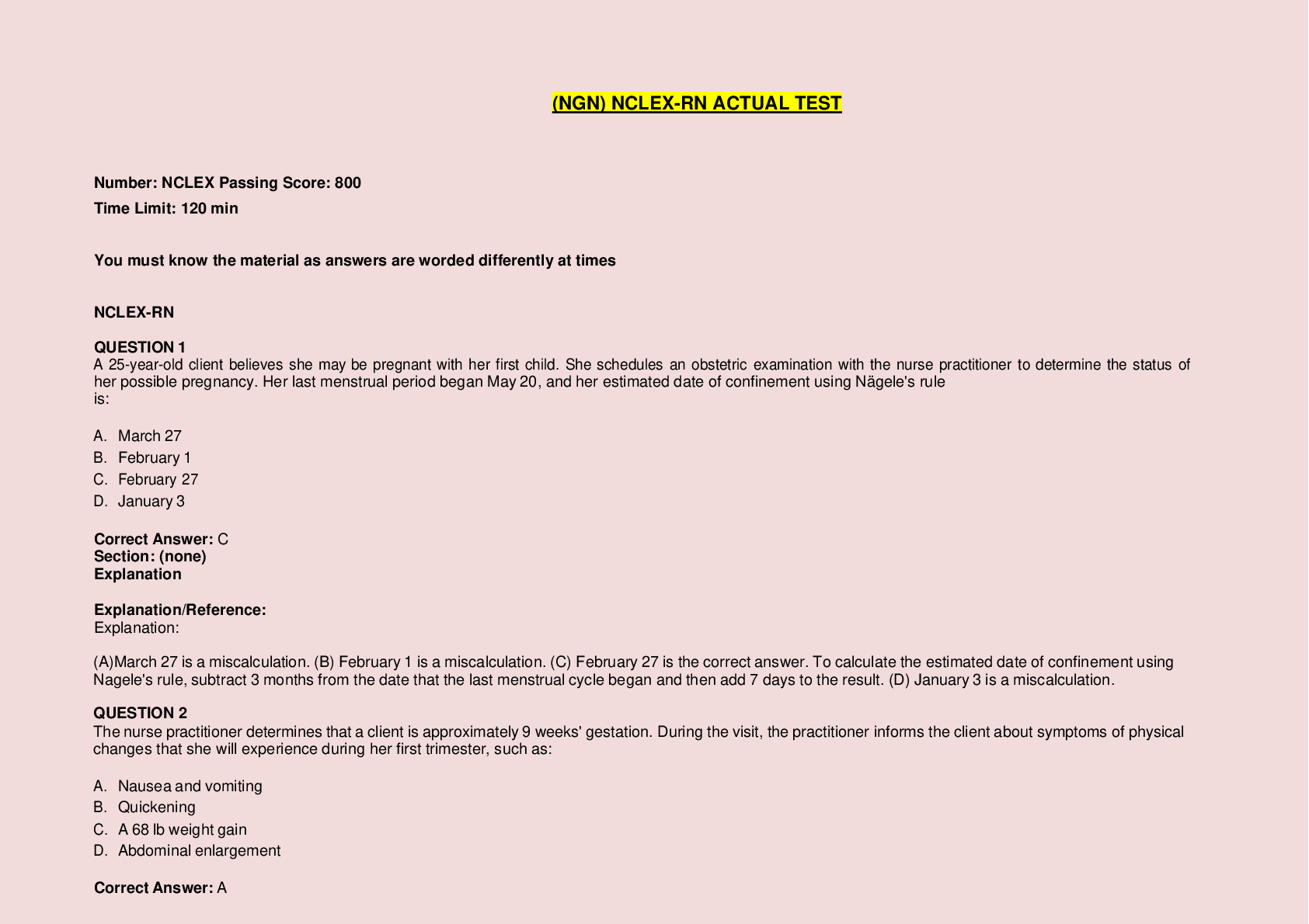
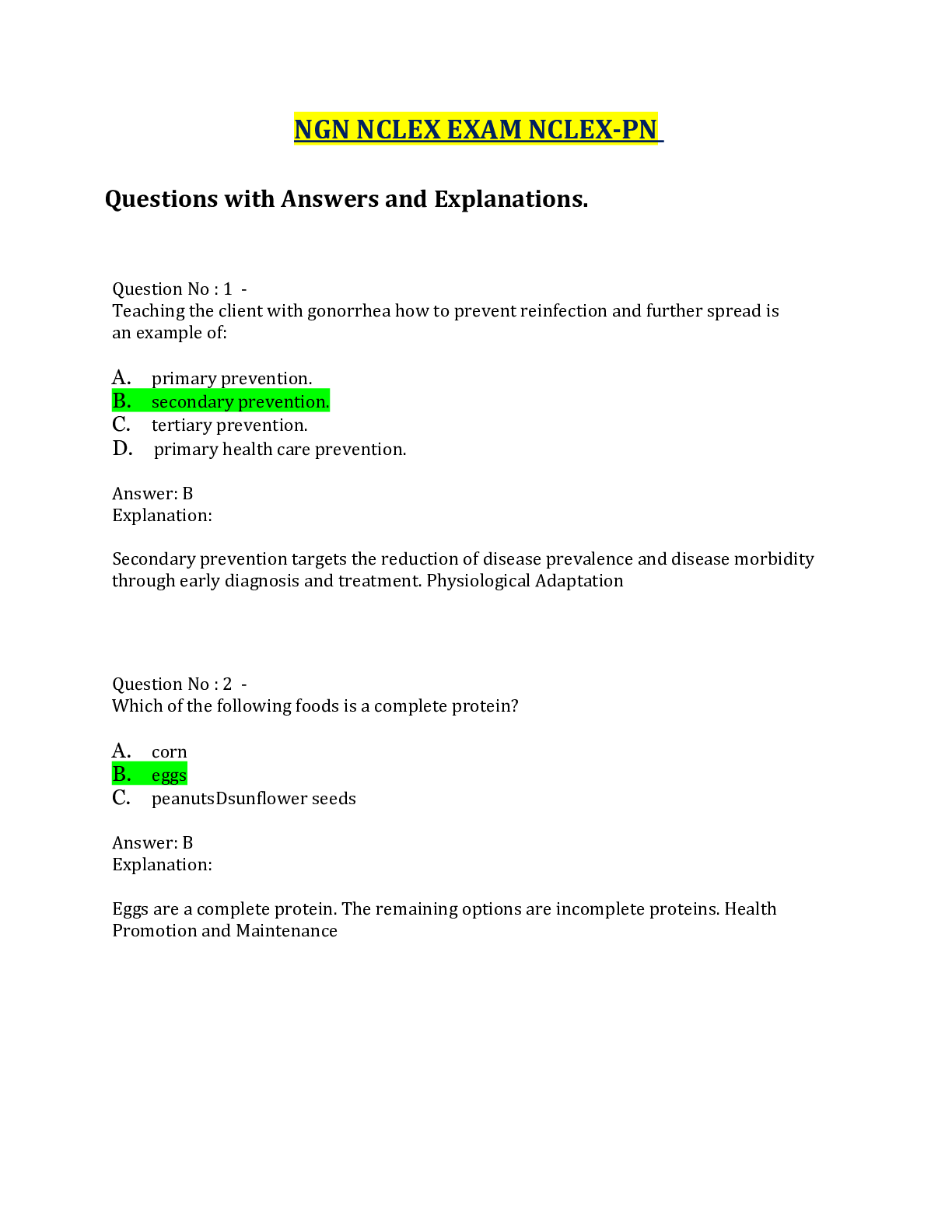

 JN21.png)
